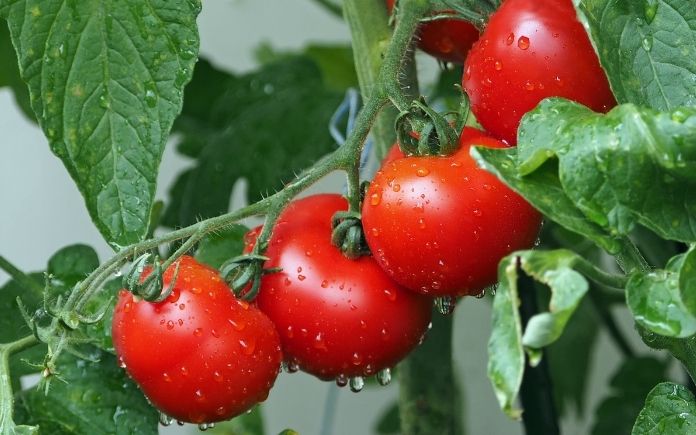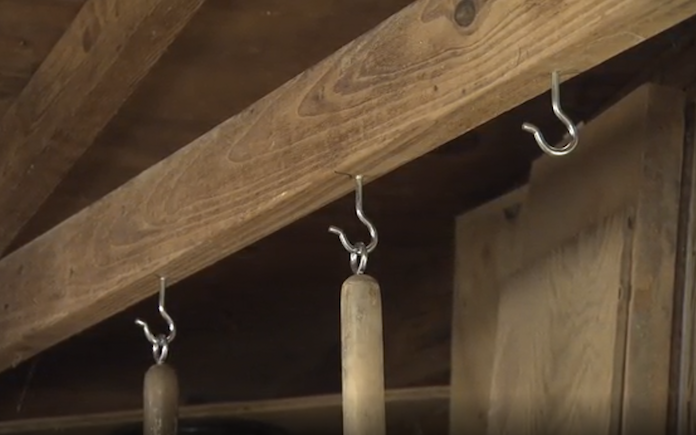[ad_1]

Repointing brick is the system of renewing the pointing, or external mortar joints, in involving them. About time, temperature deteriorates the mortar, which could then result in drinking water to leak inside the brick wall.
Repointing a historic brick household calls for a different form of mortar so it will past for years to come.
Scott Evans in Rochester, Ill., has started repointing his 155-12 months-aged brick residence in Rochester, Ill., but the mortar is popping out.
So, what is the alternative?
Scott’s trouble has to do with the form of mortar he utilised.
When repointing an older brick property, you really do not want a mortar that will treatment more durable than the brick by itself.
Older bricks are soft, and they tend to extend and contract additional in temperature and humidity adjustments than more recent, more challenging bricks.
Use sort O mortar — a higher-lime mortar with lower compression energy. It consists of much less Portland cement and much more lime, which can make it softer and also additional water resistant.
Listed here are the essentials for repointing brick:
- Use a chisel or handheld grout observed to take away the mortar.
- Damp the bricks and enable them soak overnight. Holding them hydrated will prevent the bricks from soaking up too a great deal of the h2o in the mortar combine.
- Future, blend the mortar. The common rule for mixing mortar is to use three sections sand to a person component mortar combine. Mix the blend with water right up until it reaches the consistency of cake frosting. Get the job done in tiny batches so the mortar does not dry out before you implement it.
- Function the mortar concerning the bricks applying a pointing trowel. Use the flat close of the trowel to scrape away any excess on the deal with of the brick.
- For the next three times, mist the mortar daily so it dries slowly but surely and will not crack.
Skip to [9:35] for the comprehensive segment on the Today’s House owner Podcast.
Also on this episode:
Ideal New Products
 |
LG’s new convection oven with air fry ability will save on counter space and can prepare dinner for a crowd. Study more>> |
Uncomplicated Methods

Epsom Salt in the Backyard garden — Epsom salt is magnesium sulfate, which is rich in minerals that plants will need.
By incorporating Epsom salt to your back garden, the crops will take in a great deal extra nutrients from the soil and fertilizer.
Here are three methods to expand nutritious vegetation with Epsom salt:
1) Vegetation in the nightshade loved ones — tomatoes, peppers, eggplants, potatoes — need magnesium to develop higher yields and a lot more flavorful fruits and vegetables. Sprinkle 1 tablespoon of Epsom salt about the foundation of your plants. Or, blend the salt with a gallon of water and water the plants with the mixture. Repeat just about every two months.
2) Is your garden looking dull? Include a few lbs of Epsom salt for every 1,250 sq. ft of grass and then drinking water your garden.
3) Want sturdy roses? Sprinkle Epsom salt at the time of planting and when the bouquets are in bloom. The salt encourages the rose bushes to make greater flowers with deeper shades.

Storing Yard Equipment — Here’s an simple and effective way to retailer extended-taken care of backyard garden equipment in a lose or garage:
- Drill a pilot hole in an overhead joist and twist in a screw hook.
- Then, drill a pilot hole in each stop of the tool’s handle, and twist in a screw eye.
Now you can merely suspend the resources from the overhead hooks.
Watch: Suggestion for Storing Lawn and Yard Resources
Query of the 7 days
Q: I dwell in north Ga where by the soil is comprised practically totally of pink clay, so it is just about difficult to improve bouquets and vegetables in my gardens. I tried out tilling the soil and applying fertilizers, but nothing appears to be to grow, besides weeds. Do you have any tips?
A: Clay soil has weak drainage and is compacted tightly, so roots will not maintain very well.
Generally, tilling the clay soil and including a layer of topsoil is sufficient for grass to develop. On the other hand, for plants with deeper root techniques, like greens and bouquets, you’ll require to do a truthful total of operate to make that clay soil suitable.
First, till the soil and aerate it as a great deal as feasible. Then, sprinkle about an inch of expanded shale above the soil.
Until the expanded shale into the clay soil, and then unfold two to a few inches of compost in excess of it.
Eventually, till the compost into the shale and clay soil combination.
At the time your soil is prepped, make guaranteed the pH is appropriate for regardless of what crops you decide on.
Skip to [33:50] for the total segment on the Today’s Home owner Podcast.
Other Solutions and Hyperlinks Outlined
Even further Looking at
Question a Issue! (Podcast)
Question a query and we could answer it on the “Present day Homeowner Podcast!” We also may use it on our nationally syndicated radio broadcast or on todayshomeowner.com.
[ad_2]
Supply connection


More Stories
Home Lighting Design – Daylighting Design
The Importance of Foam Insulation in Commercial Construction
Importance of Interior Design in Designing Dream Home